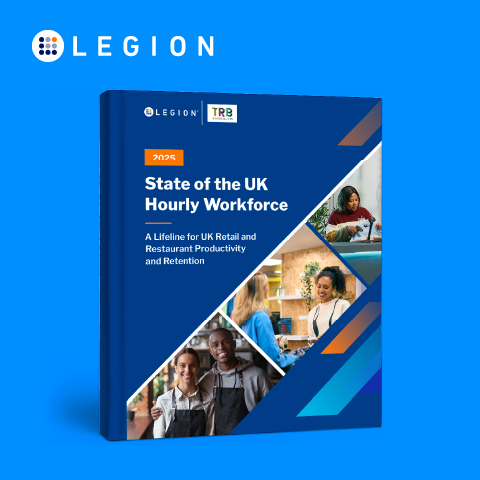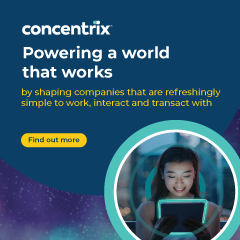5 ways retailers can measure employee engagement
What is the retail workforce experience? An associate working behind a register or someone on the floor helping customers comes to mind.
But the retail workforce spans a much broader scope of people across multiple markets and a myriad of teams, from logistics and distribution and warehouse to customer-facing roles that can make the employee experience disparate and varied. And so too can the experience these workers face be diverse and disparate – especially when the tools, support and resources they can access aren’t consistent or aligned.
In other words, retail brings together an interconnected but highly diversified network of workers like no other, which can lead to fractures and disconnects in the employee experience. That’s where employee engagement comes in.
Far too often, employee engagement is seen as intangible and vague – a nice-to-have to keep workers happy and loyal. But retail employee engagement is far more powerful than that. Engagement can unite and align the sometimes-massive workforces that retailers employ under one guiding light. It can rally workforces toward common goals and driving forces. If it’s done right.
Never Miss a Retail Update!It’s not enough to offer up opportunities for team members to connect to head office or engage with their peers. A proper employee engagement plan requires the same measurement, strategy and tactics as any campaign.
But the first step is gauging where your shop assistants are at right now. According to Gallup’s ongoing meta-analysis of employee engagement, 13% of employees in Europe are engaged, and a whopping 72% are disengaged. But every industry, and every workforce, is different. So measuring employee engagement for your people is critical to the success of any employee engagement strategy.
Warning: this is where things can sometimes go off the rails – especially in a retail organisation with hundreds of thousands of team members spanning various departments and banners. But there are ways to learn how engaged your workforce is, no matter the scale.
Here are five employee engagement measurement tactics to try with your retail workforce:
Tactic 1: Deploy pulse surveys
We know what you’re thinking – you hear surveys and instantly roll your eyes. There’s no shortage of articles talking about the challenges of employee surveys, but it remains a tried and tested method – if it’s done right – for a reason.
But if you fail to take the time to ask the right questions or try to share surveys in the wrong places, you won’t get the kind of answers you’re looking for. That’s why pulse surveys are a great option. That way, you can foster a feedback culture—and your employees get used to the regular cadence of being asked how they’re doing. Plus, sticking to one or two questions allows for easier data collection and quicker analysis.
Rather than asking general questions like “Are you engaged?” or “Are you happy at work?” try gearing your pulses around a specific pillar to better gauge what your workforce is currently getting. Here are some examples:
- Do you feel like your organisation invests in your development and growth?
- Do you feel heard at your organisation?
- On a scale of 1-10, how safe do you feel at work?
Tactic 2: Run feedback forums
Employee feedback forums are an online communication channel where employees aren’t just sending insights and feedback to head office; they’re engaging with each other’s comments and insights as well. This is more of an open channel where workers can build on other people’s ideas, especially around a specific topic or question.
Again, keep your forums as specific as possible to capture valuable intel easily. Topics for forums could be:
- Do you have what you need to do your best every day at your organisation?
- How connected are you to your organisation’s mission and purpose?
- How could we build a stronger employee community at your organisation?
The value of forums is that they provide a more open response, meaning there’s a stronger opportunity to uncover issues or learn things you didn’t know you were missing out on. But this method of collecting employee feedback has its challenges, too—if you’re bringing thousands of employees into a forum, you need to ensure you have the right tools in place to capture common sentiments and great ideas at scale. For example, one way to use forums to uncover common sentiment is to use upvoting to surface the most popular responses.
Tactic 3: Review other available metrics
There are other metrics that will help you understand how engaged your people are. Depending on how digitised your employee experience is, some of these metrics may be easier to capture than others.
Voluntary turnover rate
The number of people who have left your organisation at their own volition is against the average number of employees overall. A high turnover rate means that an above-average number of employees are quitting.
One important note: What constitutes a “high turnover rate” will vary according to several factors, e.g. location, industry and your own historical benchmarks. This is true of all these employee red flags, but especially turnover. For example, according to 2023 research by UK Money, the average turnover rate for retail is 33.6%, while the rate for F&I is 12.8%. Determining whether your turnover rate is too high requires context to understand what your data is showing.
Reachability rate
The number of employees that you can communicate with. Usually, reachability refers to the percentage of employees who are in your employee technology or tools and have used it within the past 90 days. Low reachability means that a large portion of your employees aren’t, well, reachable. Or your access points are ineffective, hard to access or confusing to use.
Feedback participation
With the right tech in place, organisations can track the number of team members delivering feedback through surveys, forums or other channels. A low participation rate can be a major red flag for disengagement, lack of psychological safety and high turnover risk.
Knowledge gaps
Disconnects between what you need your employees to know and what they actually know are problematic for many reasons. Beyond the operational and safety concerns, these gaps highlight a team’s inability to do their jobs properly, which can lead to disengagement very quickly. While you might be able to capture this anecdotally at the manager or district level, to truly measure gaps at scale, a frontline learning or enablement solution makes things much easier.
Employee advocacy
Tracking employee advocacy is a good way of measuring overall employee engagement, especially among new employees: an engaged worker is more likely to advocate for your brand. Employee NPS scores measure how “recommendable” your company is as a good place to work. eNPS tracks whether people in your organisation are promoters (likely to talk up the company), passives (unlikely to talk about the company either positively or negatively) or distractors (employees who have issues with the company). A low eNPS means you have more distractors and fewer promoters. Employee advocacy can also be measured through other review and advocacy channels, like Glassdoor.
Tactic 4: Store visits
A common practice of some of the most engaged retailers? Leaders that make face time with their frontlines. Work with your associates, head into the warehouse and see first-hand how they’re feeling.
“We all know the power of being present. When you’re able to be mentally and physically present, it magnifies the opportunity to influence and affect behaviour,” explains retail training and consulting firm MOHR Retail.
“Multiple points of feedback and assessment occur during a store visit. Just by walking in, you will get a sense of the ambience and energy of the location. A store visit also allows the DM to observe the team and clients interact with each other. Likewise, the store manager can better understand your message and expectations when they see and hear you react in person. These are things you can only fully understand by physically being present.”
Tactic 5: Do an enablement assessment
We’ve already talked about how an engaged staff is connected, agile, in-the-know, safety-focused, feedback-forward, celebrated and nurtured. Another way to capture whether these needs are being met is to assess how you enable your people. Our quiz, How enabled is your frontline, will help you assess this. Answer 20 questions to better understand how much support you’re giving your people – and how enabled they are as a result.
The first step in building an engagement plan isn’t to invest in new technology or embrace a modern approach to training and enablement (though both might be crucial later on). You can start improving and operationalising your approach to employee engagement by gathering information, listening to your people and learning about what adjustments you can make—today. And when you’re ready to put that data to use, get our Employee Engagement Playbook for the ultimate field guide to engaging and enabling every single worker in your organisation—from cashiers to distribution—at any scale.
Building an employee engagement plan?
Get the Axonify Employee Engagement Playbook for a full step-by-step approach.













